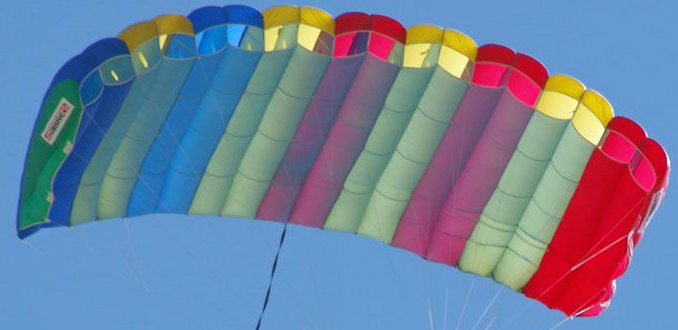-
Content
13 -
Joined
-
Last visited
-
Feedback
0%
Community Reputation
0 NeutralGear
-
Container Other
Mirage G4
-
Main Canopy Size
120
-
Main Canopy Other
Velocity
-
Reserve Canopy Size
143
-
Reserve Canopy Other
PD Optimum
-
AAD
Cypres 2
Jump Profile
-
Home DZ
Elsinore
-
License
D
-
Licensing Organization
USPA
-
Number of Jumps
2350
-
Tunnel Hours
39
-
Years in Sport
15
-
First Choice Discipline
Formation Skydiving
-
First Choice Discipline Jump Total
1800
-
Second Choice Discipline
Wing Suit Flying
-
Freefall Photographer
No
Ratings and Rigging
-
Static Line
Instructor
-
IAD
Instructor
-
AFF
Instructor
-
USPA Coach
Yes
-
Pro Rating
No
-
Wingsuit Instructor
No
-
Rigging Back
Senior Rigger
Recent Profile Visitors
The recent visitors block is disabled and is not being shown to other users.
-
Low Altitude Helicopter jump?
ssspyros replied to Scarface007's topic in General Skydiving Discussions
I'm not a BASE jumper but have done some research and have a basic understanding of the discipline. 1. For sub-terminal jumps below 1000ft you should use BASE gear. Here's an overview of gear and skydiving: Skydiving gear is mostly made and packed for terminal velocity openings (~120MPH) where you want to decelerate by a slow and progressive opening, a quick & hard opening can kill you! A main chute takes about 700-1000ft to open and a reserve is designed to open in 350ft, and is used only in an emergency if the main malfunctions. The minimum (legal) altitude to deploy your main is 2000ft and for the reserve it's above 1000ft (or 1500ft if you want to be more conservative). For example, if there is an aircraft emergency during climb up, like an engine failure, and the plane is below 1000ft (or 1500ft) then the skydivers can't jump and must land with the plane. But they may bailout if above that altitude. BASE gear is mainly made and packed for faster openings at sub-terminal speeds from lower altitudes. 2. 160-180ft is feasible but considered very low. At these altitudes you don't really get any freefall and you don't have margins for error, they are usually done using static line: you have a line attached to the object or aircraft you are jumping from, and that extracts your chute as you fall away, giving you a very fast opening. Paratroopers use static line with round parachutes, and I believe the training altitude is 1000ft and the actual combat altitude is around 300ft (someone correct me if numbers are off) 3. As mentioned above, a reserve is usually used as backup in an emergency and not for a 2nd jump, but I realize we are talking fiction here. I've heard that some BASE rigs have a reserve, however, the BASE altitudes in most cases are too low to make reserve use feasible. In order to cutaway your main and use a reserve at 350ft you would need to have a Skyhook or other MARD (Main Assisted Deployment System), what this does is use the drag of the cutaway main to pull your reserve out faster, think of it as a static line jump with the extraction line attached to the detached main chute. 4. Here's some more skydiving physics: it takes you around 10 seconds to cover the 1st 1000ft (you're accelerating from 0 to 120MPH) and after that you're travelling at terminal velocity (wind resistance stops you from accelerating further) and covering 1000ft at 5.5 seconds. When you're going at 120MPH you have a lot of drag (air resistance) and can influence your speed by changing the amount of surface area you are presenting to the wind: flatten out your body on your belly and you slow down since you are presenting maximum surface, become a needle by going head down and you speed up. All this is possible because you're moving fast. However, at sub-terminal speeds you don't have much control (not much air resistance) so you are at the mercy of gravity. Compare this to feeling the wind in your hand when you stick it out the window of a fast moving car v.s. a car driving slow in a parking lot where you feel nothing. So at low jump altitudes air resistance doesn't have much effect and you can approximate the motion by using basic physics for falling objects in a vacuum: they fall at the same rate. Therefore, 2 objects leaving at different times can't catch each other unless the 2nd one has more initial speed than the 1st. From 350ft (106m) the time to impact is roughly 4.5 seconds, calculated by: t = square root of 2d/g Where d = distance in meters, g = gravity acceleration: 9.8 m/s^2 So assuming 4 sec working time, a 1 sec canopy deployment time and jumping out 1sec after someone, you have 2 sec to catch them... provided you added more initial trust so you have more speed... You decide if that is feasible. -
I would recommend basketball shoes. They are literally made for "jumping" so they have good shock absorbing properties for hard landings, great ankle support to avoid twisting your ankle, and a flat rubber sole than has good grip on the flat plane surfaces but slides on dirt or grass, which are properties you want for your landings. The most common landing injuries are twisted or broken ankles, most of which could be avoided with good ankle support. Another thing most people don't think about is door-frame strikes while diving out, so some padding around your foot and ankle can save you from bone-to-metal impact. I wear an older model of Adidas: Crazy-8s and they have saved me on many occasions.
-



